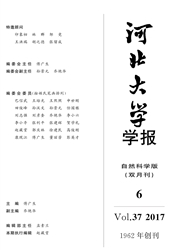

 中文摘要:
中文摘要:
为有效保护和利用药用大型真菌资源,以内蒙古地区的药用大型真菌为对象,通过相似性比较对其多样性进行了分析.结果表明:含10种以上的科为蘑菇科、白肉迷孔菌科、口磨科、球盖菇科、红菇科、多孔菌科、侧耳科;含5种以上的属为鳞伞属、干朽菌属、丝膜菌属、侧耳属、杯伞属、鬼伞属、马勃属、多孔菌属、栓菌属、乳菇属、秃马勃属、鹅膏菌属、田头菇属、针层孔菌属、灵芝属、枝瑚菌属、柄灰包属、乳牛肝菌属、革盖菌属;从属的区系地理成分上可分为广布成分(67.0%)、北温带成分(22.6%)、泛热带成分(7.7%)、热带亚洲-热带非洲成分(1.9%).按不同地区属的相似性比较进行聚类分析,在欧式距离15处可分为3组.乌兰察布盟和阿拉善各成一组.赤峰市、通辽市、兴安盟、呼伦贝尔盟和包头市组成一组.
 英文摘要:
英文摘要:
For the effective protection and utilization of medical macrofungi resources,species diversity of medical macrofungi in Inner Mongolia was studied systematically in this paper.The results showed that the dominant families were Agaricaceae,Fomitopsidaceae,Tricholomataceae,Strophariaceae,Russulaceae,Polyporaceae and Pleurotaceae,while the dominant genera were Pholiota,Gyrophana,Cortinarius,Pleurotus,Clitocybe,Coprinus,Lycoperdon,Polyporus,Trametes,Lactarius,Calvatia,Amanita,Agrocybe,Phellinus,Ganoderma,Ramaria,Tulostoma,Suillus and Coriolus.From the geographical element,they were grouped into Cosmopolitan element(67.0%),North Temperate element(22.6%),Pantropical element(7.7%),and Tropical Asia Tropical Africa element(1.9%).Cluster analysis based on Euclidean distance showed that medical macrofungi could be divided into three groups: Ulanqab League composed one group and Alashan composed another group,while Chifeng region,Tongliao region,Hulunbuir League and Baotou region constituted one group.
 同期刊论文项目
同期刊论文项目
 同项目期刊论文
同项目期刊论文
 期刊信息
期刊信息
